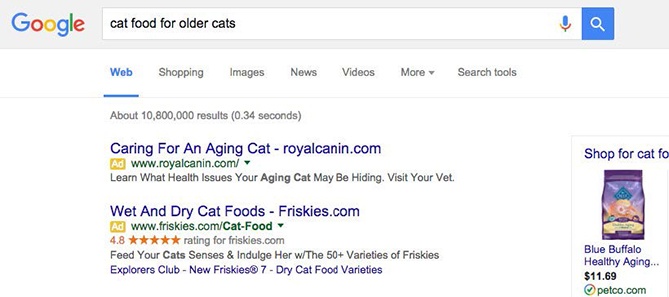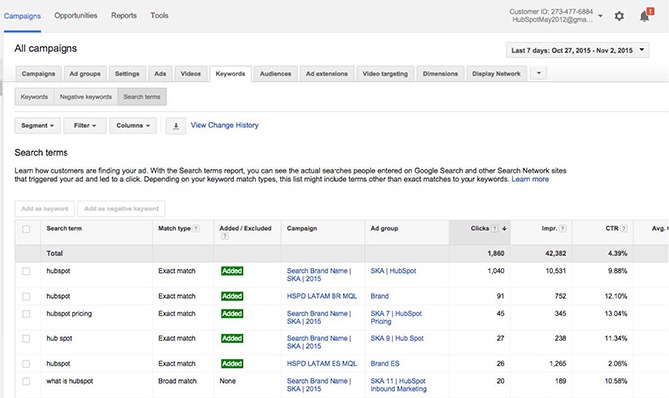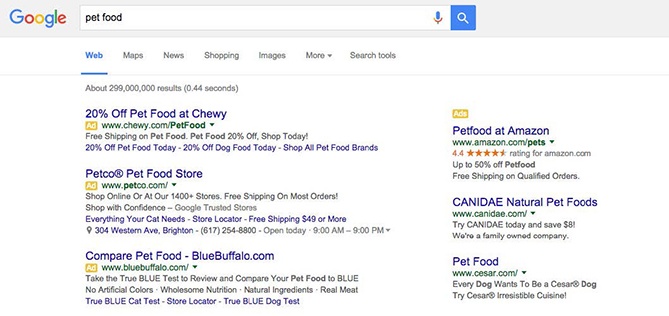
In 2016, 96% of Google's revenue came from paid search (or pay-per-click) advertising. Clearly, marketers are taking advantage of AdWords, but what does a great PPC campaign even look like? How do you ensure it drives ROI for your company? How do you even do a Google AdWords campaign?
To help you get started the right way, we're breaking down the basics of how to use paid search below.
The following is an excerpt from the ebook How to Use Google AdWords, just one of the resources included in The Ultimate Free Google AdWords PPC Kit we created with our friends at SEMrush. The kit includes the full ebook, a template, and a checklist -- everything you need to manage keywords, campaigns and ad groups successfully. If you'd like to access the full kit, click here.
How to Use Paid Search
All too often, companies -- small businesses especially -- think that if they just pay to be on a search engine, they don't have to invest time and resources in search engine optimization to rank higher organically.
It's important to make clear that paid search is not a replacement for anything, but should instead be used to complement other inbound marketing strategies. Paid online advertising takes a lot of time and effort, a lot of resources, and a lot of management, and it's something you really need to invest in.
Let's take a look at some of the useful things you can do with paid search.
Landing Page Testing
One great way to use paid search is for testing and optimizing your landing pages. So, for instance, here's the search engine results page for "cat food for older cats", and you see some paid results for this specific search query:

You can take that one ad and actually set it to go to two different destination URLs, and therefore, to two different landing pages.
So for a cat food ad, you could have one ad going to a page with one offer (a guide on feeding techniques for your older cat), and the other to a page for another offer (an actual product page for cat food).
You could also have the ad go to two different landing pages that are for the same offer. For example, if you wanted to test a feature of your forms, you could have two versions of the same landing page, each with a different form layout, and send the ad to each of those. This is called A/B testing, a very important and highly recommended practice for optimizing your landing pages.
Paid search is a great way to do landing page A/B testing because it allows you to direct traffic to your choice of pages, split this traffic to different pages, and ultimately find the pages that convert at the highest rate.
Finding New Keywords
In addition to landing page testing, you can also use paid search to find new keywords for your campaign. Google AdWords generates a Search Terms report that displays all of the keywords for which your ad has been displayed.
In other words, if you are bidding on the keyword "red shoes", Google might serve your ad when someone searches "red tennis shoes." Even though you did not bid on the exact word, the keyword "red tennis shoes" will be included in this report because that's what the user searched. The report also contains information about the performance of each of the keywords, so you can determine if it's worth adding that keyword to your campaign.
Below is a sample Search Terms report. On the left hand side is the list of keywords. The ones that show the green "Added" box next to them are the ones that are already in this paid search account.

The keywords that don't say "Added" next to them are not currently included in the account. Again, this is a list of the keywords that people are actually typing into the Google search, so it is extremely valuable information.
Take, for instance, the keyword "search engine optimization tutorial'" from the list above. That is an excellent keyword for my campaign, and I'm not buying it yet. Not only that, but I wouldn't have known about that keyword unless I had generated this report! And to top it all off, I'm able to see that when somebody searches for this keyword and clicks through to my ad, they convert on one of my offers at a rate of 21%.
Now, this high conversion rate tells me not only that I should be buying this keyword, but also that maybe I should consider using this keyword for search engine optimization as well. Maybe I should make a landing page geared toward this keyword, or an offer built around this keyword.
You should use the information in these Search Terms reports, and also in Google AdWords' Keyword Planner, to discover new keywords that will help you further optimize all of your SEM campaigns. For more information on keyword research, check out this blog post: How to Do Keyword Research for SEO: A Beginner's Guide and the Ultimate keyword research checklist.
Getting in the Game
Another great way to use paid search is to, as we say, "get in the game" and rank higher than your competitors. Let's look at PetSmart.com, which holds the number one ranking in the organic search results for the phrase "cat food".
For the phrase "dog food", they don't rank number one, but they're still above the fold, meaning that you don't have to scroll down to see the result when the page comes up. This is great, of course, but their high rank for these keywords does not mean they shouldn't bother running any paid search ads.
If you do a little research, you'll find that "pet food" is also a big keyword in this space, and PetSmart ranks far below the fold for it. On top of that, they're not running a paid search campaign with Google AdWords either. But their competitor, Petco, does have a paid search campaign, and so their ad appears on the results page, while PetSmart does not. So this is a sample instance where running a paid search campaign makes a lot of sense.

Paid Search Can't Stand Alone
When you think about how you should use paid search, one of the best ways to think about it is to use it as a complement to your inbound marketing efforts. You can use paid search to maximize your coverage on the search engine's result page (SERP).
For instance, here we have the search term "inbound marketing." You'll see that there's an organic search listing for HubSpot that ranks second on the page (just after Wikipedia), but we're also buying the keyword "inbound marketing," which displays our paid search ad for it.
So now we have that natural search ad, the paid one, and, if you scroll down the page, you'll find yet another organic search listing for HubSpot via SlideShare. This widespread coverage on the search engine results page for "inbound marketing" helps to establish HubSpot as an authoritative figure for inbound marketing, and drives more traffic to our pages.
The good news is -- you can do this for your business as well! Take the opportunity to establish your company as a leader in your industry by increasing your presence on search engines with paid search campaigns.
Ready to get started with the full ebook, template, and checklist? Click here to access the complete Ultimate Free Google AdWords PPC Kit.

No comments:
Post a Comment